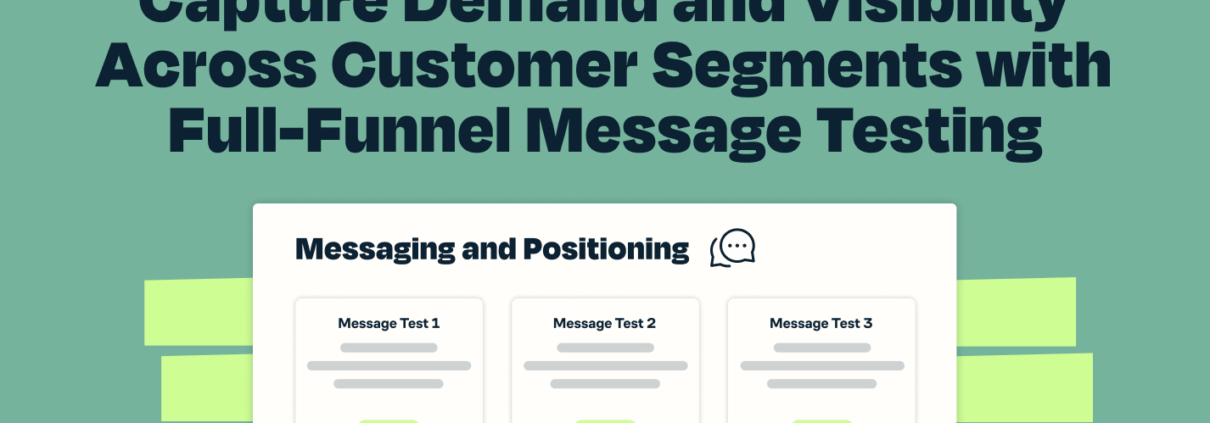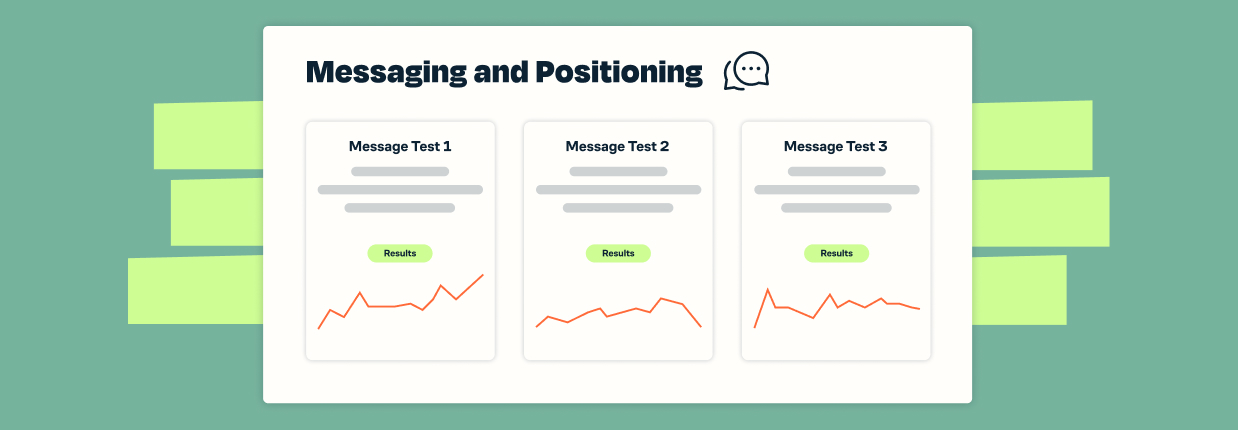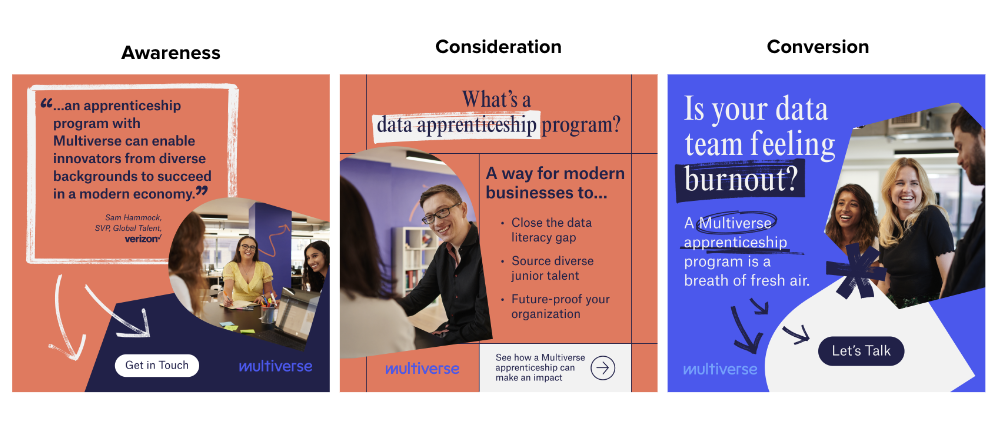Capture Demand and Visibility Across Customer Segments with Full-Funnel Message Testing
We’ve written blogs about the key components that make up performance creative and how to utilize this type of creative to generate results and we’ve written blogs about how to use targeting platforms to build super segmented audiences. But how do you merge the two together to make sure that you’re targeting the right people with the right creative?
This is where the fun part comes in – figuring out how to differentiate different creative for each stage of the lifecycle and growth marketing funnel.
The marketing funnel – what is it?
For several of our partners, it’s a priority to differentiate their advertising strategy and marketing dollars by each stage of the marketing funnel. The marketing funnel outlines a customer’s journey and helps categorize where in their journey they fall into, which then dictates the best way to reach them, market to them, and nurture them. The most prevalent stages of the funnel are:
- Awareness
- Consideration
- Decision/Purchase/Conversion
As a growth marketing agency, our role is to apply strategies across the entire funnel by implementing data-driven process for launching structured experiments to drive a specific behavior/action. While it’s definitely possible to create audiences that target each part of the funnel separately directly in certain ads platforms, such as LinkedIn where our targeting can get really granular, we also tend to see our partners find more success when they use account-based marketing (ABM) audience tools such as 6sense, DemandBase, and more. This allows them to truly find which companies make sense to reach depending on their level of engagement with the company already (for instance, if someone has never been touched by a company, they’d fall into the awareness stage; whereas if they have interacted with the company in one way or another, they’d fall into Consideration.
How do you determine the type of ad creative to show at each stage?
If you’re choosing to segment your audience targeting by stages of the marketing funnel, it’s in your best interest to also prioritize producing content and creative, especially will ABM creative- otherwise, you’ll be showing people who are at very different places in their buying journey the exact same ads and you won’t truly be tailoring to the way they’re thinking.
When you’re looking to get in front of people who are higher in the marketing funnel at the Awareness stage, the goal is to show them inspiring ads that are simple and get the point of the company/service/product across pretty easily but also are inspiring and tap into their emotions to hook them to learn more, thus journeying down the funnel. Once a person is in the Consideration stage, it’s important to begin to lean on educational ads – sometimes this means you may need to expand your assets to include more robust content or landing pages where you can provide more information with more time to explain. Finally, you want to leverage persuasive assets that will drive home that decision once a person is in the Decision stage. A good way to look at it is:
Inspire → educate → persuade
It makes sense once you start to think more about it, right? But the hard part is what parts of an ABM creative asset can be customized to speak to that part of the funnel?
Creative aspects to differentiate for each part of the funnel
For our partner, Multiverse, who designs and manages apprenticeship programs for US and UK-based companies, we were tasked with strategizing and executing their B2B efforts targeted to companies who would be interested in hiring Multiverse to create programs for them. Last year, we had a brainstorming session to chat through the particular companies/personas that fall into each stage of the funnel for them, and how they were looking to market to them. We took a look at a variety of aspects:
1. Content
You may hear the phrase “content is king 👑” quite often, and this is especially true when it comes to B2B marketing, and even more true when it comes to the main social ads platform we leverage with Multiverse – LinkedIn. No matter what stage of the funnel, content is extremely valuable for anyone in their journey with a business, but it’s really important to be intentional about the type of content you promote to each stage. For the Awareness stage, where people are just looking to learn about a company and gain more information, content is a huge incentive for them to engage. Therefore, we lean on gated content, whether that be directly gated in-platform or gated behind a landing page where people can learn even more information before submitting their information. Even once someone travels down the funnel toward Decision, content is still valuable and worth utilizing, and you’ll want to make sure you’re choosing content that is even more helpful to people who are about ready to make a decision in their buying journey.
2. Messaging
Arguably one of the most important parts of an ad is the strategic messaging behind it as this dictates the ad copy used and the text overlay in the creative, both of which make up the entire ad itself that people are seeing. When it comes to the Awareness stage, we like to lean on educational and informational messaging that will help someone brand new to the company get a general idea of what the company does or offers. For those in the Consideration stage, messaging that offers more specific selling points is useful. And finally, for those in the Decision stage, messages that are relevant to the journey this audience has already been through that will help bring the sale home are necessary.
For Multiverse, we came up with the following value propositions for each stage of the funnel as follows:
- Awareness = educational and informational about what Multiverse does and how it can solve a problem for a company
- “Compete for the same pool of talent with other big tech companies”
- “Create your OWN talent”
- “Is outsourcing the best option for you? You can cultivate your own talent development in-house!”
- Consideration = more specific selling points
- “Customized curriculum”
- “Time and efficiency with value”
- “Coaching support”
- Decision = relevant messages to bring the sale home
- “Sense of urgency in solving problems in today’s economic climate”
- “Avoid burnout of your current team and foster retention”
- “Other companies are getting ahead of this and you should too”
3. Call-to-actions (CTAs)
While they may be considered part of the messaging, call-to-actions are another way to personalize and differentiate an ad to a particular audience who is in a particular stage in the funnel. CTAs are easy to get to stick out too because you can make them pop on a creative asset but also, most platforms offer a button to customize with CTA text or you can choose from a drop-down of options.
Keeping in mind the stage of the funnel the audience you’re targeting is in will help you make sure that you’re showing them the CTA that makes the most sense to them. The higher in the funnel they are (the newer in the journey), the softer the CTA. The further-down-the-funnel, the harder the CTA. Here are the CTAs we’ve rotated between for Multiverse:
- Awareness: get in touch, learn more, see how, discover
- Consideration: learn more, book a call today, see how
- Decision: let’s talk, get started
Real-life results from Multiverse
We began testing this “creative by lifecycle stage” approach with Multiverse’s audience segments, which were targeting companies that were likely to have needs for data apprenticeship programs based on the nature of their products or services. Our creative team designed 3 concepts for each stage of the funnel. Here is the top-performing concept from each of those stages in terms of click-through rate:
When looking at two months of performance, the campaigns’ CTR are as follows:
- Awareness: 0.32%
- Consideration: 0.34%
- Decision: 0.41%
Right away, it’s easy to draw the conclusion that CTR increased from top of the funnel to bottom of the funnel, which can very much speak to the more tailored the messaging became and “harder” the CTAs were as we traveled down the funnel to the Decision creative.
How can you get started?
If this type of creative brainstorming and production sounds like something you need to tap into to make sure you’re approaching each stage of your funnel with the right ads, then take some time with your team that communicates with these audiences every day to see the type of messaging they resonate with and translate that exactly into the creative you’re serving to them. And, like we always say, the most important next step is to test, test, and test again!







